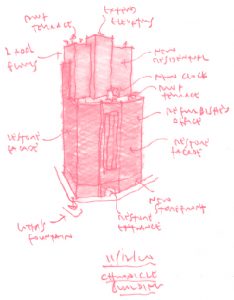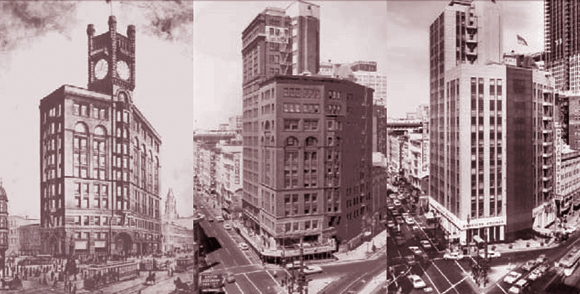The Tin Men altered more than just residential neighborhoods. Metal cladding, known as “slipcovers” to architectural historians, can be found on major buildings today. In San Francisco, a metal slipcover hides one of the city’s most famous structures.
The Chronicle Building was the first skyscraper constructed on the West Coast. Designed by Chicago architects Burnham and Root in 1890 for M.H. de Young, it was an architectural and technical marvel. It was taller than its rival Call Building, contained seismic bracing within its clay tile floors, and touted the largest clock in the world.

This distinctive skyscraper subsequently defined an important corner along Market Street until the metal slipcover, still visible today, was erected in 1962. It then changed hands a number of times and slowly fell into disrepair, narrowly avoiding demolition in 1990.
Using economic incentives for historic building reuse, new owners are now seeking a development partner to reestablish the building as one of architectural prominence. The slipcover will be removed and a modern addition will focus attention on the original façade in a gesture to return a landmark to the city of San Francisco.
Author Charles F. Bloszies, FAIA, is an architect and a structural engineer in San Francisco. Subsequent to the publication of this article, he oversaw the rehabilitation, adaptive reuse, and expansion of the Chronicle Building, now the Ritz-Carlton Club and Residences.
Photos courtesy of Building Engineer’s Office, 690 Market Street, drawing by Charles F. Bloszies.
Originally published 1st quarter 2002, in arcCA 02.1, “Image Mirror.”






